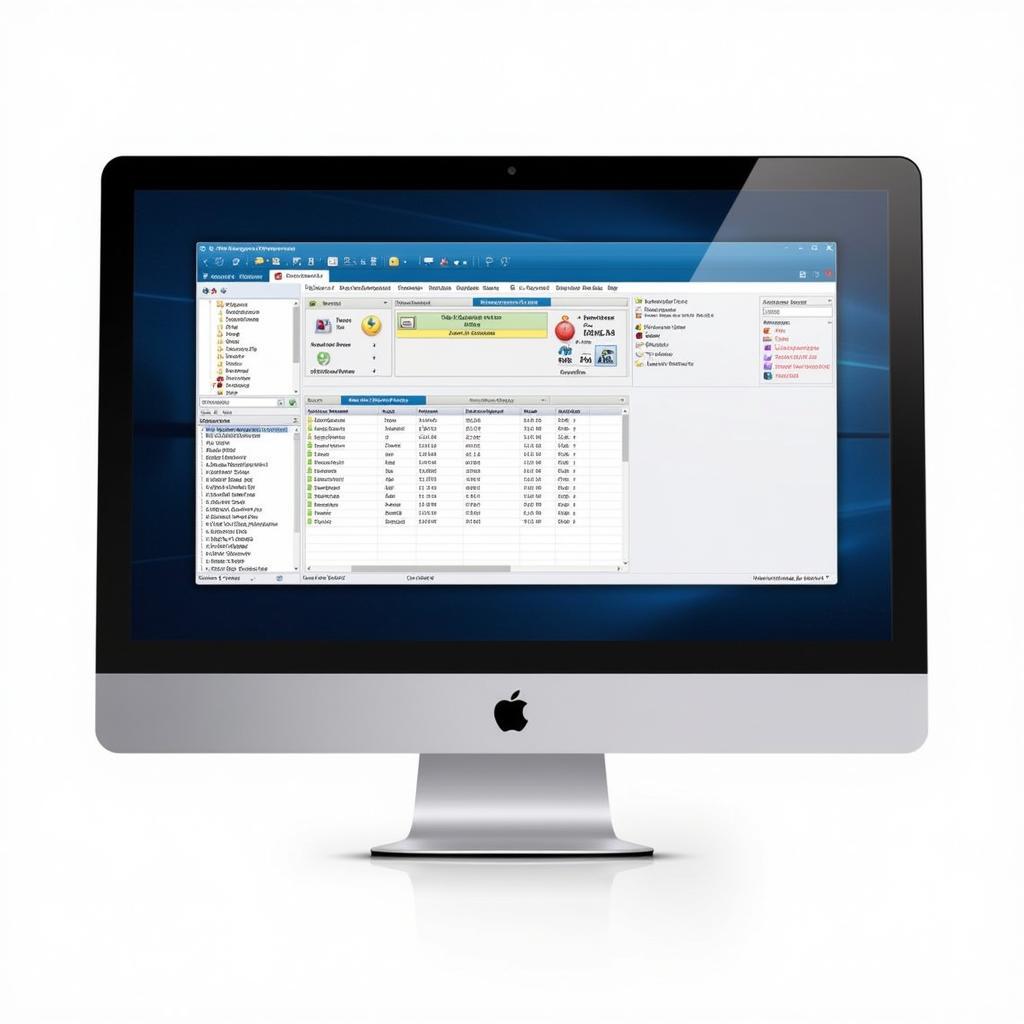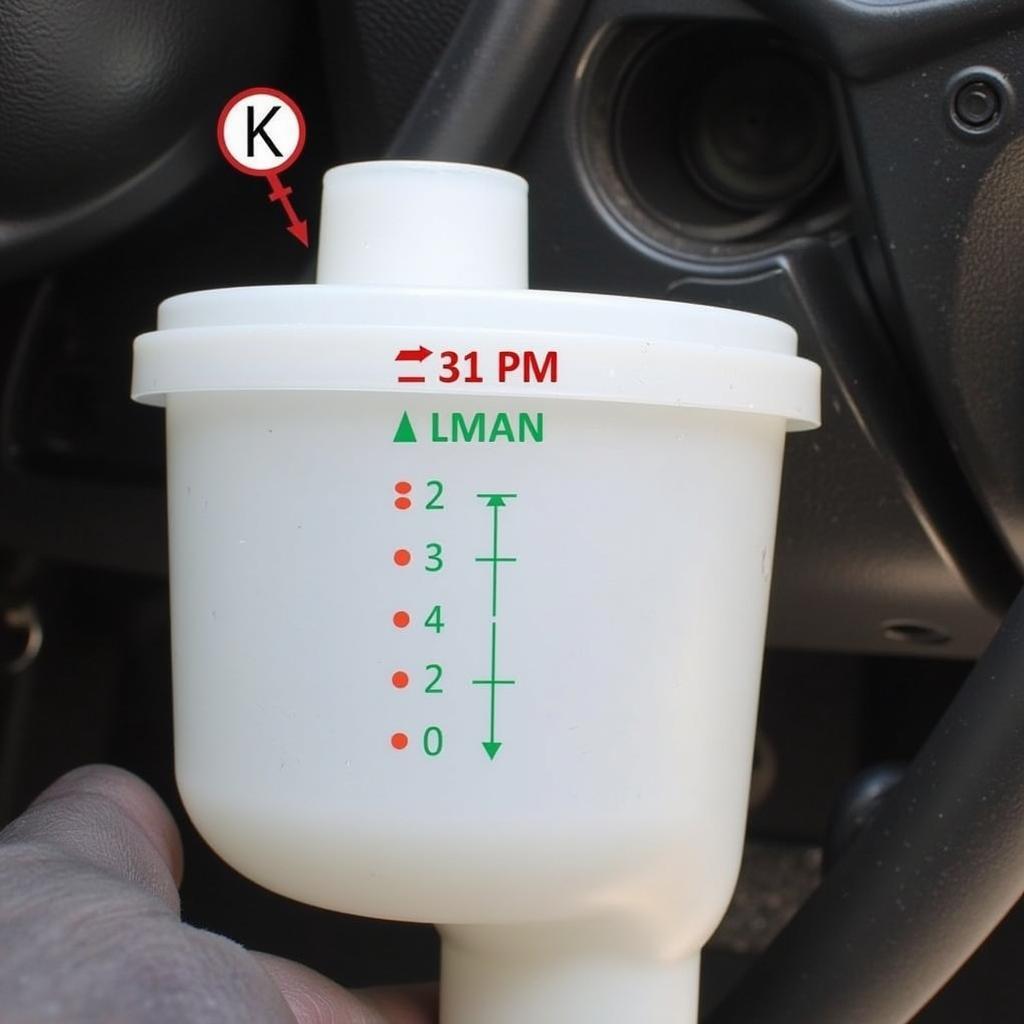The dreaded Chevy Blazer brake warning light can be a source of anxiety for any driver. Understanding why this light illuminates and how to address the underlying issue is crucial for ensuring your safety and the longevity of your vehicle. This guide will provide a comprehensive overview of the Chevy Blazer brake warning light, covering everything from common causes to diagnostic procedures and remote software solutions.
What Triggers the Chevy Blazer Brake Warning Light?
Several factors can trigger the brake warning light in your Chevy Blazer. These range from simple issues like low brake fluid to more complex problems requiring professional attention. Let’s delve into the most frequent culprits:
Low Brake Fluid
One of the most common reasons for the brake warning light is low brake fluid. This usually indicates a leak somewhere in the brake system. Ignoring this can lead to brake failure, a dangerous situation.
Worn Brake Pads
Brake pads wear down over time, and when they reach a certain point, a sensor triggers the warning light. Replacing your brake pads is a routine maintenance task crucial for safe braking.
Faulty Brake Sensor
Sometimes, the brake sensor itself can malfunction, triggering the warning light even when the brake fluid level and pads are fine. A diagnostic scan can pinpoint this issue.
ABS System Malfunction
The Anti-lock Braking System (ABS) is a vital safety feature. If there’s a problem with the ABS, the warning light might illuminate, often accompanied by an ABS warning light.
Parking Brake Engaged
It may seem obvious, but sometimes the warning light is simply on because the parking brake is engaged. Make sure to disengage it fully.
Diagnosing the Problem: From DIY Checks to Remote Diagnostics
If your Chevy Blazer brake warning light is on, you can perform some initial checks yourself. Start by checking the brake fluid level. If it’s low, top it off and monitor it closely for further drops, indicating a potential leak. Next, inspect your brake pads for wear. If they appear thin, it’s time for a replacement.
Leveraging Remote Software Solutions
Beyond these basic checks, more sophisticated diagnostics may be necessary. Remote software solutions allow technicians to access your vehicle’s computer remotely, identify fault codes, and even perform certain software updates or calibrations, offering a convenient and efficient way to diagnose and resolve brake issues.
“Remote diagnostics are transforming the automotive repair industry,” says Michael Stevenson, Senior Automotive Diagnostic Engineer at Remote Automotive Solutions Inc. “They provide faster, more precise diagnostics and often eliminate the need for a physical visit to a repair shop.”
 Inspecting Chevy Blazer brake pads for wear
Inspecting Chevy Blazer brake pads for wear
Addressing the Issue: From Simple Fixes to Remote Programming
Once the problem is diagnosed, you can proceed with the appropriate solution. For simple issues like low brake fluid or worn pads, you might be able to handle the repair yourself. However, for more complex issues like ABS malfunctions or faulty sensors, professional assistance is recommended.
Remote Programming and Installation
Remote programming and software installation can address certain brake-related issues without requiring a physical visit to a mechanic. This cutting-edge technology allows technicians to remotely update your vehicle’s software, potentially resolving issues related to the ABS, electronic stability control (ESC), and other brake-related systems.
“Remote programming provides a significant advantage in terms of convenience and speed,” explains Sarah Thompson, Lead Software Engineer at Automotive Remote Programming Solutions. “It allows us to quickly address software-related issues that might otherwise require a lengthy trip to a dealership.”
 Chevy Blazer remote diagnostics software interface
Chevy Blazer remote diagnostics software interface
Conclusion
The Chevy Blazer brake warning light shouldn’t be ignored. From checking your brake fluid to utilizing remote diagnostics and programming, understanding the potential causes and solutions empowers you to take the necessary steps to ensure your safety and maintain your vehicle’s braking system effectively. Don’t hesitate to seek professional help if needed. Your safety and the proper functioning of your Chevy Blazer’s brakes are paramount.
FAQ
- What should I do if my Chevy Blazer brake warning light comes on while driving? Pull over safely and assess the situation. Check your parking brake, and if it’s not engaged, seek professional assistance.
- Can I drive my Chevy Blazer with the brake warning light on? It’s not recommended. Driving with a brake warning light on can be dangerous.
- How much does it cost to fix a Chevy Blazer brake warning light issue? The cost varies depending on the underlying problem. It could range from a simple fluid top-up to more expensive repairs.
- How often should I check my Chevy Blazer’s brake fluid level? Checking your brake fluid level monthly is a good practice.
- What are the signs of a brake fluid leak in a Chevy Blazer? Low brake fluid, a soft brake pedal, and a puddle of fluid under your vehicle are potential signs of a leak.
- Can remote diagnostics fix all Chevy Blazer brake problems? While remote diagnostics can address many brake-related issues, some problems may still require physical inspection and repair.
- Where can I find a qualified technician to perform remote diagnostics on my Chevy Blazer? Contact your local dealership or search online for certified remote diagnostic service providers.


